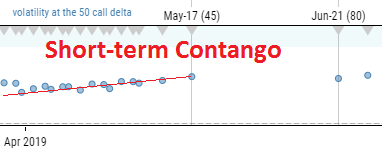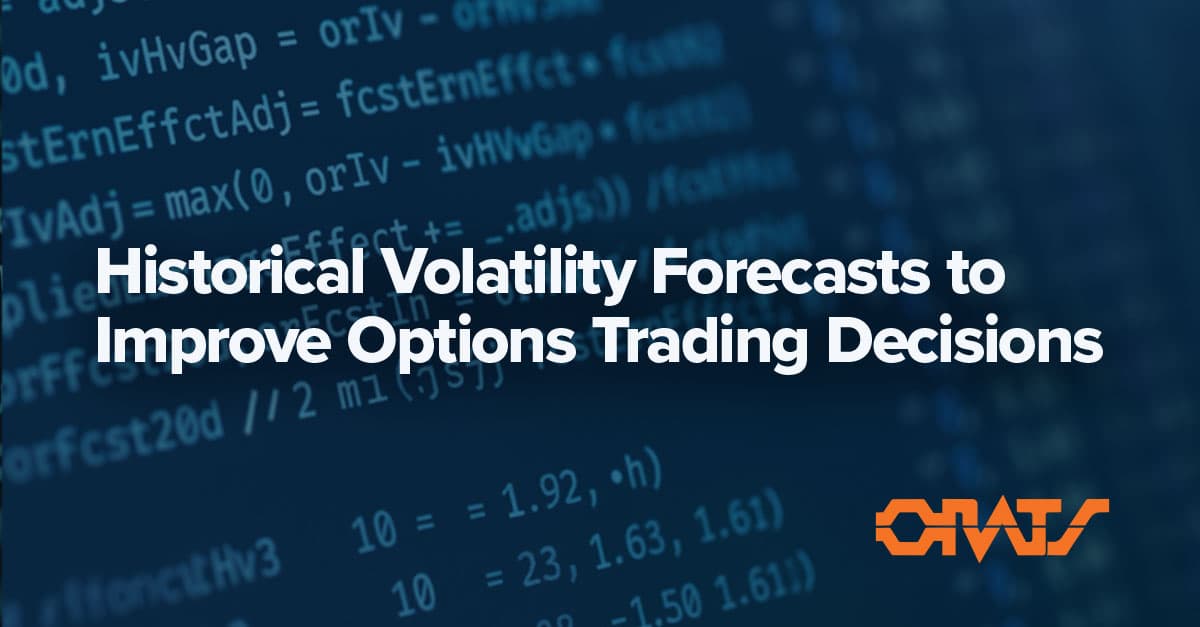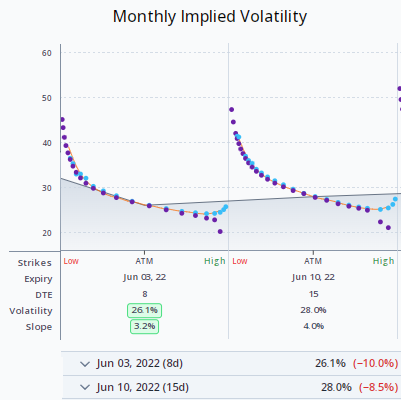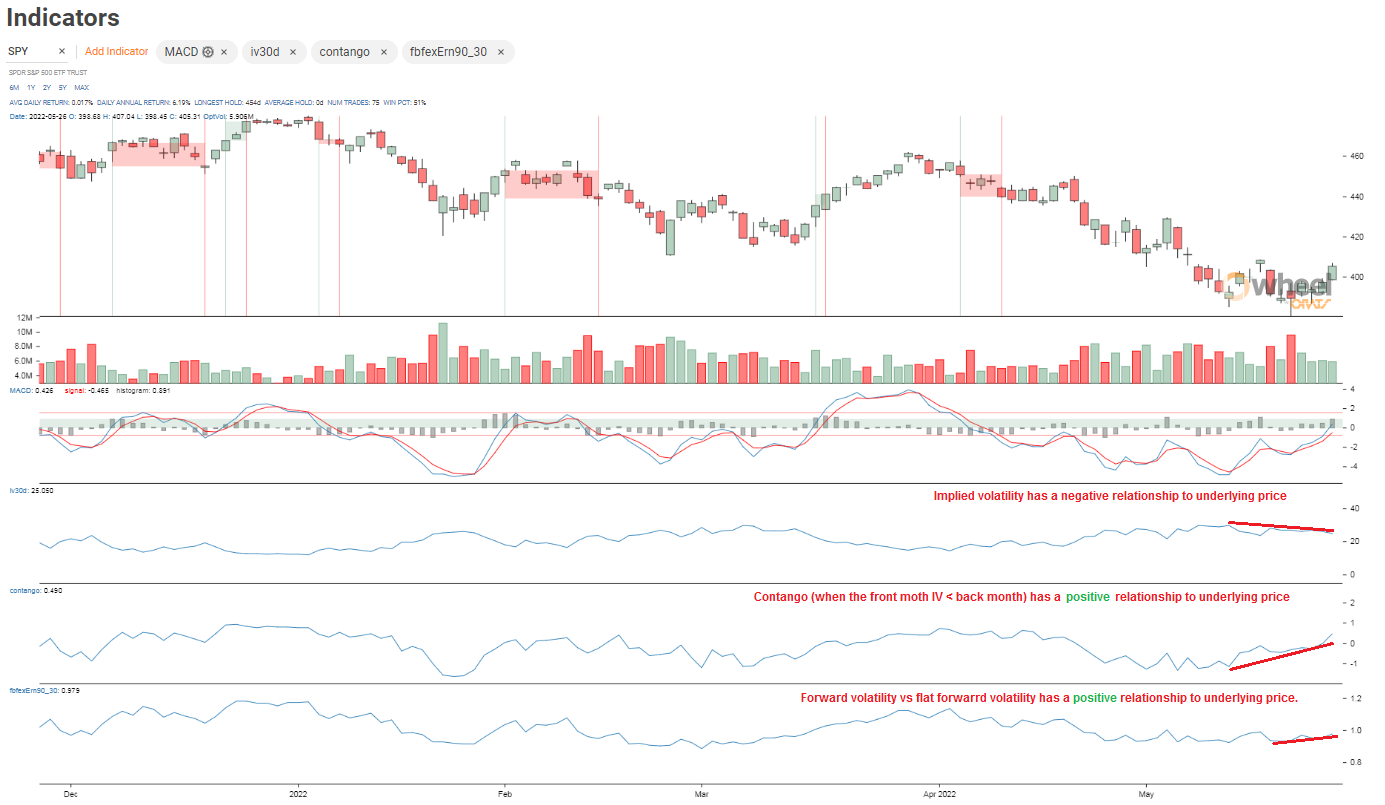Indicators
Tuesday, April 2nd 2019
Our Strongest Signal Indicator, Contango, and Its Relationship to Constant Implied Volatility
Contango and Backwardation term structure implied volatility skew tell important tales about the sentiment of the market and ORATS uses these signals in our Data API.
Summary
Contango, the slope of at-the-money implied volatilities from short term expirations, is an important signal for traders. ORATS tracks this signal closely, as well as the term structure implied volatility skew, which is often kinked about 45 days out. Contango is the normal state of the options market, but when it flips to backwardation, it can be a bad sign for the market.
One of the best signals we track is short term contango. The Contango reading measures the slope of the at-the-money implied volatilities from short term expirations.

We have found that the term structure implied volatility skew is often kinked about 45 days out. For expirations greater than 45 days a more rational term structure is normally observed.
Short term implied volatility is also more important for use in signals because those traders in the know will get more leverage using shorter term options. This is why we track this reading so closely.
A similar analysis could come from looking at constant maturity readings, like 10-day implied volatility (called iv10d in our API) to 20-day and 30-day. The problem with using constant maturity to make contango calculations is that there are not as many observations, and constant maturity has already weighted the around the days to expiration implied volatility to make the reading.
Contango is when the shorter implieds are below the longer implieds. This is the normal state of affairs for the options market happening 72.5% of the days since 2007. The flipside of contango is backwardation. Backwardation is when the short term IVs are greater than the long term.
What we see sometimes is that when contango flips to backwardation, it is usually already bad or going to get bad for the market.
To see pricing for various levels of the Data API, go HERE
You can see more explanations of ORATS data HERE
Check out stories on the blog about data HERE
Disclaimer:
The opinions and ideas presented herein are for informational and educational purposes only and should not be construed to represent trading or investment advice tailored to your investment objectives. You should not rely solely on any content herein and we strongly encourage you to discuss any trades or investments with your broker or investment adviser, prior to execution. None of the information contained herein constitutes a recommendation that any particular security, portfolio, transaction, or investment strategy is suitable for any specific person. Option trading and investing involves risk and is not suitable for all investors.
All opinions are based upon information and systems considered reliable, but we do not warrant the completeness or accuracy, and such information should not be relied upon as such. We are under no obligation to update or correct any information herein. All statements and opinions are subject to change without notice.
Past performance is not indicative of future results. We do not, will not and cannot guarantee any specific outcome or profit. All traders and investors must be aware of the real risk of loss in following any strategy or investment discussed herein.
Owners, employees, directors, shareholders, officers, agents or representatives of ORATS may have interests or positions in securities of any company profiled herein. Specifically, such individuals or entities may buy or sell positions, and may or may not follow the information provided herein. Some or all of the positions may have been acquired prior to the publication of such information, and such positions may increase or decrease at any time. Any opinions expressed and/or information are statements of judgment as of the date of publication only.
Day trading, short term trading, options trading, and futures trading are extremely risky undertakings. They generally are not appropriate for someone with limited capital, little or no trading experience, and/ or a low tolerance for risk. Never execute a trade unless you can afford to and are prepared to lose your entire investment. In addition, certain trades may result in a loss greater than your entire investment. Always perform your own due diligence and, as appropriate, make informed decisions with the help of a licensed financial professional.
Commissions, fees and other costs associated with investing or trading may vary from broker to broker. All investors and traders are advised to speak with their stock broker or investment adviser about these costs. Be aware that certain trades that may be profitable for some may not be profitable for others, after taking into account these costs. In certain markets, investors and traders may not always be able to buy or sell a position at the price discussed, and consequently not be able to take advantage of certain trades discussed herein.
Be sure to read the OCCs Characteristics and Risks of Standardized Options to learn more about options trading.
Related Posts



